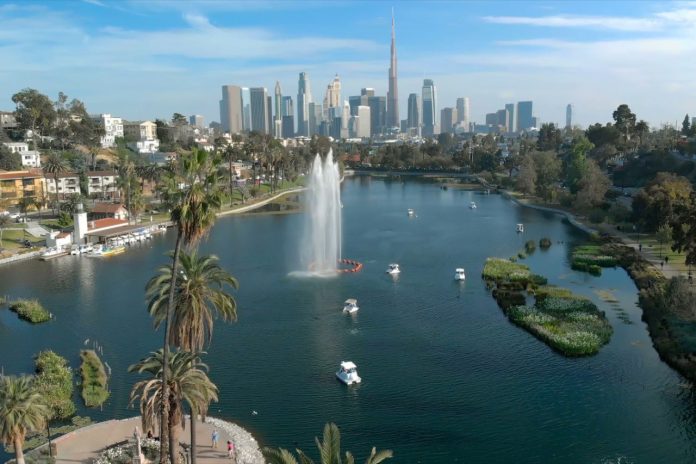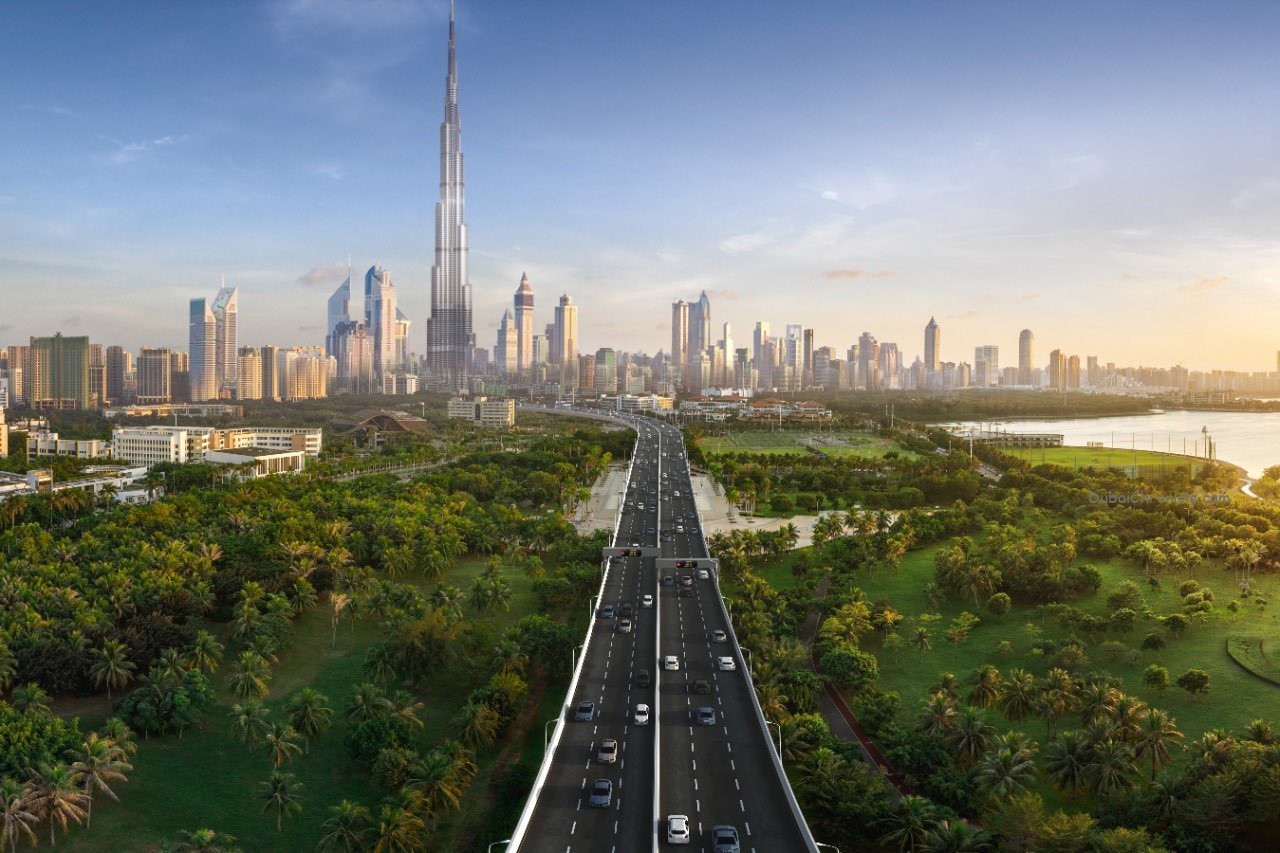
His Highness Sheikh Mohammed bin Rashid Al Maktoum, Vice President and Prime Minister of the UAE and Ruler of Dubai, today launched the Dubai 2040 Urban Master Plan that maps out a comprehensive future map for sustainable urban development in the city.
Aligned with the UAE’s vision for the next 50 years, the Plan is focused on enhancing people’s happiness and quality of life.
The people-centric Plan focuses on reinforcing Dubai’s competitiveness as a global destination by providing a wide diversity of lifestyle and investment opportunities for citizens, residents and visitors over the next 20 years. Designed to realise His Highness’s vision to make Dubai the city with the world’s best quality of life, the plan aims to provide the highest standards of urban infrastructure and facilities.
His Highness Sheikh Mohammed bin Rashid Al Maktoum said the visionary development journey started by the late Sheikh Rashid bin Saeed Al Maktoum in the sixties continues to guide Dubai’s evolution into a city that promotes the greatest human values and possibilities and an environment where people from around the world can thrive.
“Our strategic development plans are focused on creating the best possible environment and infrastructure to enhance the community’s happiness and wellbeing and support the fulfilment of the greatest human aspirations for both our citizens and people from around the world. Drawing inspiration from global best practices and adapting them to local needs and requirements, we have created a development model that offers the best possible quality of life and creates the conditions for sustainable prosperity. Our goal is to create a truly inclusive environment that not only meets the needs of Dubai’s diverse population, but also inspires them to tap into their creative and innovative capacities and realise their true potential,” His Highness said.
“By constantly striving to raise benchmarks and implementing diligent strategic planning, we have joined the ranks of the world’s leaders in various spheres and sectors. With a clear vision and a deep understanding of what it takes to succeed in an evolving global environment, we continue to work to shape an even greater future rich with opportunities,” Sheikh Mohammed added.
The new Master Plan is the seventh such plan developed for the emirate since 1960. Between 1960 and 2020, the population of Dubai has multiplied 80 times from 40,000 in 1960 to 3.3 million by the end of 2020 and increased in cultural diversity to include people from over 200 nationalities. The urban and built area of the emirate increased 170-fold from 3.2 square km in the same period.
Enhanced quality of life
The Plan envisages upgrading Dubai’s urban areas, with development mainly focused on five key centres. Some of the key priorities include improving the efficiency of resource utilisation, developing vibrant, healthy and inclusive communities, and doubling green and leisure areas as well as public parks to provide a healthy environment for residents and visitors.
The new Master Plan also seeks to provide sustainable and flexible means of mobility as well a foster greater economic activity and attract foreign investments to new sectors. Other objectives include enhancing environmental sustainability, safeguarding the emirate’s cultural and urban heritage and developing a comprehensive legislation and planning governance model.
The Urban Master Plan has designed a strategic structural layout for Dubai over the next 20 years, integrating all urban development master plans in the emirate. The Plan is also aligned with Dubai’s strategic economic priorities and the needs of the future.
Five urban centres
The Dubai Urban Master Plan is focused on development and investment in five main urban centres (three existing and two new centres) that support growth of economic sectors and increased job opportunities for its diverse population, in addition to providing an wide range of lifestyle facilities that cater to the needs of all sections of the population. The existing urban centres include Deira and Bur Dubai, historic areas that highlight the emirate’s tradition and heritage; the business and financial heart of the city encompassing Downtown and Business Bay; the hospitality and leisure centre encompassing the Dubai Marina and JBR that serves as an international tourism and leisure hub. The two new centres include Expo 2020 Centre, an economic and growth hotspot featuring affordable housing and a focal point for the exhibitions, tourism and logistics sectors; and Dubai Silicon Oasis Centre, a science and technology and knowledge hub that drives innovation, digital economy development and talent generation.
Equitable access to facilities
The new Master Plan has defined an integrated approach to the development of the urban centres by providing equitable access to facilities, services and opportunities across the city for all residents.
Depending on urbanisation levels, the Master Plan defines a hierarchy of communities in the city. The largest of them, the emirate, includes the five main ‘towns’ built around each of the five main urban centres with a population of 1 to 1.5 million, followed by the multi sector with a population of between 300,000 and 400,000; the sector with a population of between 70,000 and 125,000; the district with a population of between 20,000 and 30,000; the community with a population from 6,000 to 12,000 and finally the neighbourhood, with a population between 2,000 and 4,000. Based on these levels, infrastructure and transit systems, energy and government services, and facilities such as hospitals, schools, service centres, and leisure centres will be provided across of Dubai.
Population
According to recent studies, the number of Dubai residents is expected to increase from 3.3 million in 2020 to 5.8 million by 2040, while the day-time population is set to increase from 4.5 million in 2020 to 7.8 million in 2040. The Master Plan focuses on utilising available spaces within the limits of the current city and concentrating development in existing urban areas. Easily accessible integrated service centres will be established across Dubai to ensure that the needs of all sections of the population are catered to. The plan seeks to raise the quality of life of the city while increasing population densities around key mass transit stations.
Growth rooted in sustainability
Under the Plan, green and recreational spaces and areas dedicated to public parks will double in size to serve the growing number of number of residents and visitors. Nature reserves and rural natural areas will constitute 60% of the emirate’s total area. Several green corridors will be established to link the service areas, residential areas and workplaces, facilitate the movement of pedestrians, bicycles, and sustainable mobility means across the city, in coordination with developers and government departments. The land area used for hotels and tourist activities will increase by 134%, while that used for commercial activities will increase to 168 square kilometres. Dubai will continue to be a global hub for innovative start-ups, international corporations, and strategic investments. The Master Plan will also increase the land area allocated to education and health facilities by 25%, while the length of public beaches will increase by as much as 400% in 2040 to increase the quality of life for residents and visitors.
Along with its Urban Master Plan 2040, Dubai will issue an integrated and flexible urban planning law that supports sustainable development and growth, taking into consideration the future aspirations of the emirate’s diverse population. The Master Plan features a model for integrated governance of the urban planning system that streamlines the mutual relationships and responsibilities of all stakeholders.
The new Plan will raise the efficiency of development and promote the optimal utilisation of the infrastructure by developing vacant urban spaces. The Master Plan aims to encourage mass transit use, walking, cycling and the use of flexible means of transportation, besides developing a comprehensive planning database to support decision-making and enhance transparency.
The Dubai Urban Master Plan 2040 integrates the Hatta Development Plan, which has created a framework for the comprehensive development of the area. The Plan seeks to both develop and raise the profile of Hatta’s natural and tourism attractions, as well as protect its environment in partnership with the private sector. The Hatta Development Plan will offer people in the locality the opportunity to participate in efforts to promote tourism and preserve the natural beauty and identity of the area.
The Plan also seeks to develop integrated sustainable housing complexes to meet the needs of citizens. The 2040 Urban Master Plan will develop integrated communities according to the highest planning standards, with green spaces, commercial centres and recreational facilities aimed at enhancing human well-being.
























![The Square at Nad Al Sheba Gardens Now Open hope tax season treated you well! Just checking in—ready to refocus on growing your business? I remember how we discussed scaling your [specific aspect of their business, e.g., online presence] but paused due to time constraints. We now offer a streamlined 6-month plan that delivers real results without adding to your workload. Let me know if you'd like to chat—I’d love to help you pick up where we left off!](https://www.dubaichronicle.com/wp-content/uploads/2024/11/The-Square-5-218x150.jpg)








